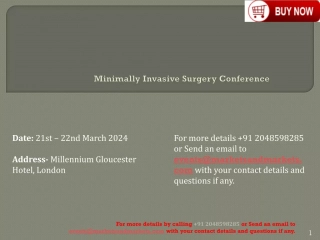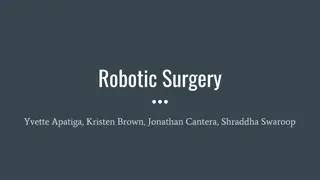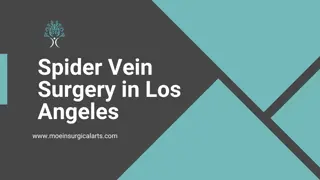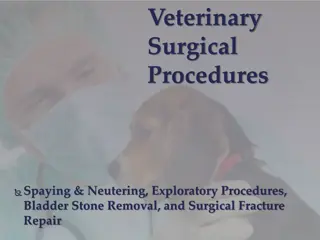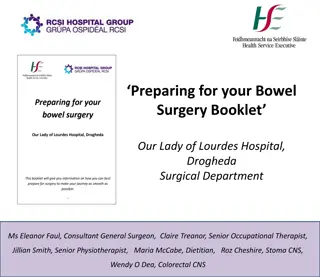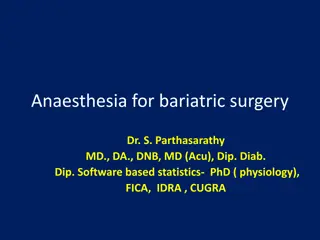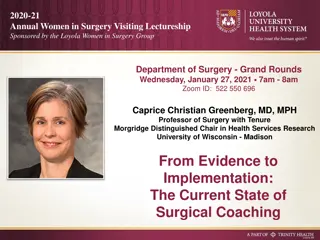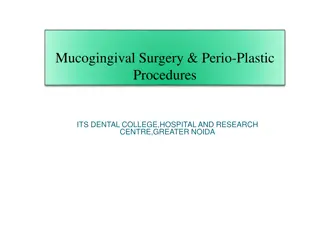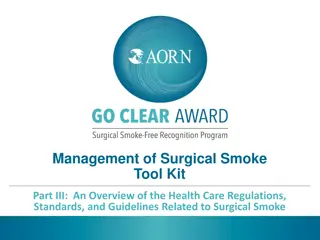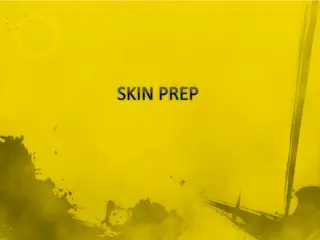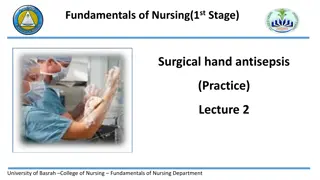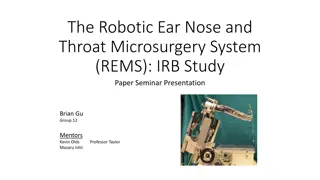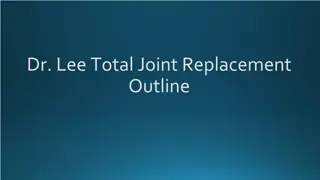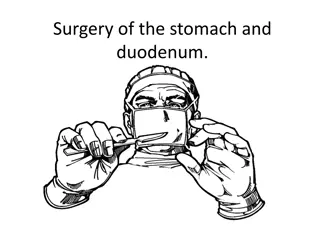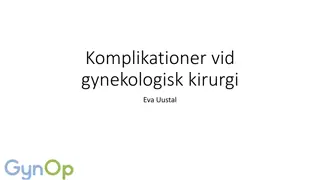Surgical Sites in Animal Surgery: Techniques and Procedures
Incisions in animal surgery are crucial for various procedures like exploratory laparotomy, rumenotomy, and correction of intestinal obstructions. The most common incision sites in cattle include the flank and ventrolateral areas, each serving specific surgical needs. Proper technique during incision and closure is essential for successful outcomes in veterinary surgical procedures.
Download Presentation

Please find below an Image/Link to download the presentation.
The content on the website is provided AS IS for your information and personal use only. It may not be sold, licensed, or shared on other websites without obtaining consent from the author. Download presentation by click this link. If you encounter any issues during the download, it is possible that the publisher has removed the file from their server.
E N D
Presentation Transcript
SURGICAL SITE IN ANIMAL UNIT-5 (REGIONAL SURGERY II) DR. MITHILESH KUMAR Assistant Professor cum Jr. Scientist Veterinary Surgery and Radiology Bihar Veterinary College, Patna-800014
INCISION SITES IN CATTLE:- Right and Left flank incision remains most popular sites in ruminants. Median, Paramedian and ventrolateral incision also used. Extreme paramedian incision parallel and lateral to the Subcutaneous abdominal vein routinely used in for cs in large animal ruminants.
FLANK INCISION:- Upper left flank laparotomy- Exploratory laparotomy, Rumenotomy, left flank abomasopexy and repair of ruptured UB. Occasionally left flank incision used to remove a macerated or mummified fetus from uterus. Lower left flank used for CS in sheep, goat, buffalo and cattle.
Upper right flank laparotomy include Exploratory laparotomy, abomasopexy, omentopexy, surgical correction of intestinal obstruction and caecal dilatation. UPPER FLANK INCISION:- Middle of left paralumbar fossa. Incision parallel to last rib to retrieve foreign body from reticulum. Slightly oblique incision below the tubercoxae to approach to approach UB.
The skin is incised with smooth but firm pressure. Dissection of the subcutaneous fossa and oblique muscle explore transverse abdominis muscle. Transverse abdominis muscle and attached peritoneum incised altogether. Avoid separation of transverse muscle and peritoneum.
Flank laparotomy incision sutured in two layer transverse muscle and peritoneum in one layer and obliquus muscle in other layer. Skin sutured with simple interrupted or horizontal mattress. In lower flank incision include the combined aponeurosis of the two obliquus muscle, rectus abdominis muscle and peritoneum.
Ventrolateral oblique incision The incision is placed in front of the stifle and extends cranioventrally in a slightly oblique direction Include skin, subcutaneous fascia and aponeurosis of the two oblique muscle, which form external sheath of rectus abdominis muscle, transverse abdominis muscle and peritoneum.
PARAMEDIAN INCISION :- Region between linea alba and subcutaneous abdominal milk vein. Used in cattle and buffalo. Chance of dehiscence is not more if suture placed carefully and avoid contamination. Ventrally placed incision are avoided due to requirement of assistance and control in dorsal recumbency.
Incision cranial to umbilicus and to the xiphoid process-Abomasopexy. CS lateral incision behind the umbilicus to the udder. Structure include skin, external rectus sheath, rectus abdominis muscle and peritoneum. Suturing of the subcutaneous tissue before closure of skin prevent seroma formation.
EXTREME PARAMEDIAN INCISION:- Lateral to subcutaneous abdominal vein Used for CS in buffalo and cattle. Interlocking suture pattern for closure of muscle. MEDIAN INCISION: Midline incision over lenea alba in small ruminants.
Peritoneum and linea alba sutured together either simple interrupted or continuous lock stich pattern POST XIPHOID INCISION:- Crescent shaped incision for DH in cattle and buffalo Incise the reticular abscess. Interrupted horizontal mattress suture are used to close muscle and peritoneum with thick non absorbable suture. Skin horizontal mattress suture.
ABDOMINAL INCISION IN DOG CS and Intussusception in dog Midline incision. Gastrotomy Midline incision near post xiphoid. Cystotomy- Midline incision behind umbilicus



